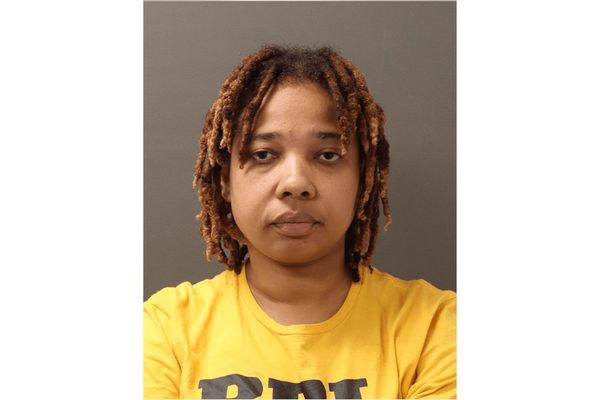
If you want to understand the debate about bail reform in Victoria – and the gulf between the position taken by the Allan government and the recommendations of experts – you could do worse than consider the case of an alleged youth offender known as MMA.
His case has straddled the recent changes in bail laws: he was granted bail in the Victorian supreme court only days before they were introduced to parliament, and then had to apply for an extension of that bail last week under the new laws.
He also represents other concerns about Victoria’s justice system that have been met with state government responses that some experts consider counterproductive, expensive, reactionary, and failing to address the social issues that drive youth offending.
MMA (which is his court ordered pseudonym) has no criminal record but he faces serious charges allegedly committed while he was aged 17.
Police allege he stomped on someone’s head at a shopping centre, leaving them unconscious and stealing their shoes. On the same day, he allegedly pushed over one police officer and stood over them with clenched fists.
While on bail for these offences, he is alleged to have committed six robberies, possessed a large machete and been involved in multiple assaults.
He was arrested and bailed again in September last year. Police allege he committed two more robberies and an armed robbery in the following fortnight.
He was released on bail again later that month, allegedly breached his conditions and was then granted supervised bail in October.
MMA attended five of eight scheduled appointments and was expected to attend court in December. He allegedly failed to show up.
Police allege that he was involved in an aggravated carjacking, when a rideshare driver was threatened with a machete, and other offences.
He was remanded in custody until he appeared before Justice James Gorton for a bail application in the supreme court on 5 March.
Youth Justice opposed bail.
Its concerns included that MMA told them he did not want any bail conditions with a curfew and would rather “return to the community on a sentenced order”, he refused to engage in an assessment, and could only live with relatives where alleged co-offenders also resided.
He maintained connections with young people known to Youth Justice and told them he has “issues with multiple young people from opposing ‘gangs’” and allegedly committed numerous physical assaults while on remand, including on Youth Justice staff.
But he also told Youth Justice staff he wanted to get a job and did not want to let his family down.
“The allegations, if correct, reveal an ongoing preparedness to engage, repeatedly, in violent and threatening behaviour, including with the use of weapons, against members of the public,” Gorton found.
“The applicant’s history also reveals, if the allegations against him are correct, that his engagement with police, the laying of charges and being subject to a summons to answer an offence and even the imposition of bail conditions have not operated in the past to prevent his continuing to offend in the same way.
“The applicant, to date, has not been precluded from offending by a fear of the criminal justice system.”
Gorton found there was a real risk MMA would “reoffend and endanger the safety or welfare of others or interfere with the administration of justice” if he was released on bail.
Under the previous bail laws, Gorton had to consider the need to impose “the minimum intervention required in the circumstances with the remand of the child being the last resort”.
Youth Justice, over the course of the bail application, changed its position to support supervised bail.
Gorton found that even if MMA was found guilty of the offences, he may spend longer on remand than the time he would be sentenced to.
The judge also found that perhaps the most important factor was that MMA had been in custody for the three previous months, and that it had a “potential deterrent effect”.
Gorton granted bail for two weeks on 14 strict conditions, including a curfew, complying with Youth Justice programs, not communicating with people alleged by police to be gang members, and reporting to a police station three times a week.
Last week, MMA was back before Gorton.
He mostly complied with the conditions: police showed up three times during the curfew from 9pm and 6am and he was there each time, he reported to the local police station four times (instead of the required six), “fully engaged” with youth justice programs, and otherwise “had no involvements with police”.
All this while MMA was working 42 hours a week, almost 40km away from home.
But Gorton now had new laws to consider. While there remained a need to impose on a child “the minimum intervention required in the circumstances”, the remand of a child was no longer to be seen as “a last resort”.
Despite the new laws, Gorton said, he still had to consider MMA’s age and maturity at the time of the alleged offences, the need to strengthen and preserve his relationship with his family, and the importance of supporting him to live at home or in a safe, stable and secure living arrangement.
He also had to consider the importance of supporting him to engage in education, training or work, the need to minimise the stigma to him resulting from being remanded in custody, the likely sentence should he be found guilty, the need to ensure that the conditions of bail are no more onerous than are necessary, and recommendations or information contained in any report provided by a bail support service.
He said MMA remained an unacceptable risk of reoffending without the strict conditions and extended his bail on those conditions for a month.
There is nothing simple about alleged youth offenders such as MMA, despite how those who are charged with offences such as robberies and using machetes are portrayed on the nightly news or on the social media reels of influencers.
Locking alleged offenders like these up, experts say, often just momentarily delays their offending, rather than challenging them to change their lives. It is the difference between burning a containment line to control a fire and putting it out.
The signs in MMA’s case, Gorton said, were “good and positive”. It will take far longer than two weeks to see what new bail laws will mean for other alleged youth offenders like him, or how they will help a state government desperate to be seen as tough on crime.







